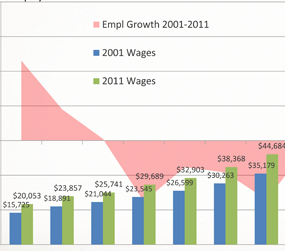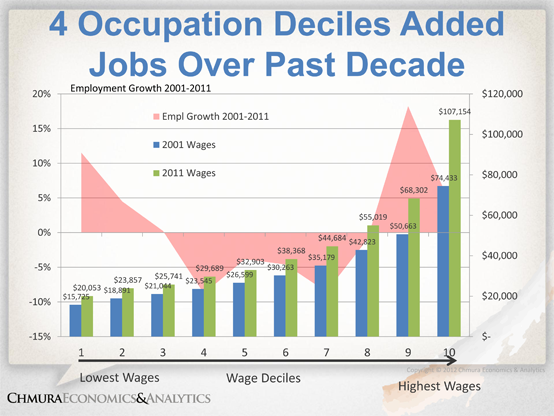Where the Jobs Are

By Chris Chmura |
The golden ticket for most economic development programs is job creation, and the more the better. For folks involved in workforce development, the perfect job would provide a sustaining wage for individuals and families. This ticket has been hard to come by for many communities as the nation’s economy limps forward, offering little in terms of opportunity for a large portion of job seekers in the middle. Chmura’s economists took a look at more than 800 occupations, analyzed employment growth and wage gains that occurred between 2001 and 2011, and identified a few trends that help us understand where the jobs are (and where they aren’t).
We broke occupations into ten groups based on employment and wages earned and analyzed each decile based on job and wage growth. The results demonstrate two troubling facts. First, wages have been mostly stagnant during the ten-year study period, with gains exceeding inflation for only occupations on the high end of the scale. Second, job growth has been mostly isolated to those jobs paying the least and those that pay the most.
Over the past ten years, employment growth has been negative for occupations in the middle and it’s a substantial middle, representing more than 60% of the total jobs and wages. The data suggest it’s one part of the explanation for the skills gap – those who lost jobs in the middle may be unwilling to accept a position that pays less than their previous job and unable (because of skills and experience shortfalls) to successfully compete for jobs at the higher end of the scale.
Subscribe to the Weekly Economic Update
Subscribe to the Weekly Economic Update and get news delivered straight to your inbox.
